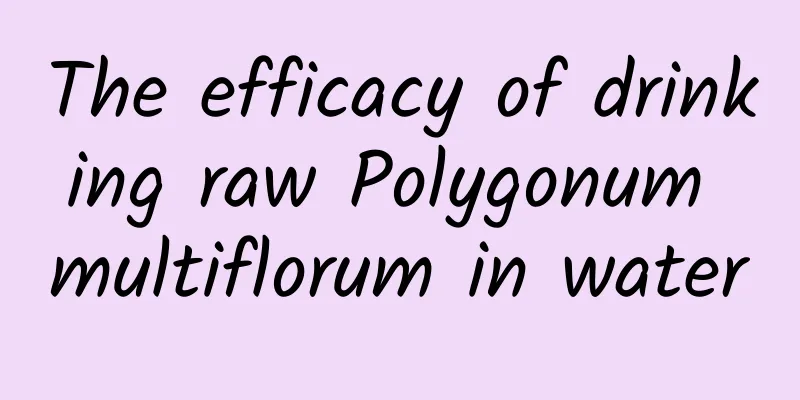What are the effects and functions of Hangbai Chrysanthemum

|
Chrysanthemum is also a very common Chinese medicinal material, which is very helpful in tonifying the kidney. Although there are many kidney-tonifying medicines in today's society, everyone knows that Western medicine is always poisonous when it comes to treating diseases. Traditional Chinese medicine treatment is relatively healthier, so many people want to know what are the effects and functions of Hangbai Chrysanthemum? The efficacy of chrysanthemum White chrysanthemum, also known as xiaotanghuang and small white chrysanthemum, is a specialty of Tongxiang area. It, along with Chuju and Boju in Anhui and Huaiju in Henan, are all famous chrysanthemums used for tea in China. Chrysanthemum has a long history of cultivation in China. "Hangzhou Bai Gongju" has always been mentioned together with "Longjing Famous Tea". It was used as tribute in ancient times. Medicinal value Nature and flavor: spicy, sweet, bitter, slightly cold. Function: Dispel wind-heat, soothe the liver and improve eyesight, clear away heat and detoxify. Yellow chrysanthemum has a stronger effect of dispersing and clearing, while white chrysanthemum can also nourish the liver. It is often used to treat exogenous wind-heat or the initial stage of febrile disease, as well as hyperactivity of liver yang, liver-fire eye diseases, heat-toxic sores and swellings, etc. Chrysanthemum, also known as chamomile, is a traditional cultivated medicinal plant in my country. It is one of the eight famous medicinal materials in Zhejiang Province, "Zhe Eight Flavors", and is also the best variety of chrysanthemum tea. Modern medical pharmacology has proven that it has the effects of stopping diarrhea, reducing inflammation, improving eyesight, lowering blood pressure, lowering blood lipids and strengthening the body. It can be used to treat damp-heat jaundice, stomach pain, poor appetite, edema and oliguria. Bathing in chrysanthemum soup has the function of relieving itching, refreshing the body, and protecting the skin and beautifying the skin. Also known as Xiaotanghuang and Xiaobaiju, it is a specialty of Hangzhou area. It, along with Chuju and Boju from Anhui and Huaiju from Henan, are all well-known chrysanthemums for tea production in China. Chrysanthemum has a long history of cultivation in my country. "Hangzhou Bai Gongju" has always been mentioned together with "Longjing Famous Tea". It was used as tribute in ancient times. It is made by steaming and drying fresh white chrysanthemum, a perennial herb. After being brewed with boiling water, the water turns light green and is filled with a refreshing fragrance. Hangzhou chrysanthemum contains ingredients such as chrysanthemum glycin, amino acids and trace vitamins, which have the effects of clearing wind and dissipating heat, improving eyesight and detoxifying. It also has the effects of relieving heat and cooling down, clearing the liver and improving eyesight, refreshing the mind and acting as a diuretic. The varieties of chrysanthemum include Huju, Xiaoyangju, Dayangju, Xiaobaiju, Xiaohuhuang, etc. The origin of chrysanthemum is Tongxiang, which has a long history of cultivation, a large planting area, high yield and good quality. In the past, in order to take advantage of Hangzhou’s popularity, Tongxiang tea merchants named the white chrysanthemum produced in Tongxiang "Hangzhou", and the name has been used to this day. According to Zhejiang traditional customs, "yellow chrysanthemum is used as medicine, white chrysanthemum is used in tea" and yellow chrysanthemum is listed as one of the eight major medicinal materials in Zhejiang. According to medical analysis, chrysanthemum contains ingredients such as chrysanthemum, honey, amino acids and trace vitamins. It is slightly cold in nature and tastes sweet and bitter. It has the effects of dispersing wind and heat, clearing the liver and improving eyesight, as well as detoxifying and anti-inflammatory. It can treat hypertension, migraine, acute conjunctivitis and other diseases. If you use chrysanthemum to make tea as a beverage, it is slightly sweet and fragrant, and is a better choice. Effects Content and efficacy Chrysanthemum is a plant of the Asteraceae family. Its flowers contain 0.13% volatile oil, chrysanthemum glycoside, adenine, cholecalciferol, stachydrine and trace amounts of vitamin A-like substances, vitamin B, amino acids and acacia alkaloids. Joint research by traditional Chinese medicine and Western medicine shows that drinking chrysanthemum tea has the following effects: 1. It has a sedative effect on the central nervous system; 2. It has an antipyretic effect; 3. It enhances capillary resistance and dilates coronary arteries; 4. It has an antibacterial effect. Chrysanthemum decoction and water infusion have inhibitory effects on Staphylococcus aureus, Shigella dysenteriae, Proteus, Salmonella typhi, Salmonella paratyphi, Vibrio cholerae, beta-hemolytic Streptococcus, Escherichia coli, Pseudomonas aeruginosa, Mycobacterium tuberculosis and influenza virus (PR3 strain). Element content of chrysanthemum: Chrysanthemum contains zinc, sodium, iron and other elements, especially iron, which has the highest content. Iron is an important component in cells. More than half of the enzymes in the tricarboxylic acid cycle contain iron or require iron as a cofactor. Iron is closely related to the body's immune defense function, and it can coordinate the metabolism of zinc, calcium, and magnesium in the body. Chrysanthemum contains higher amounts of nickel, zinc and iron, while wild chrysanthemum contains higher amounts of sodium and calcium than chrysanthemum. The biggest difference is that the lead content in wild chrysanthemum is 6 times that of chrysanthemum, which is related to the ecological environment in which they grow, and also warns us humans of the harmfulness of environmental lead pollution. Because chrysanthemum has a low lead content and high mineral content, it has high medical and health value. Tea: The chrysanthemum produced here adopts original ecological scientific technology to dry rose flowers and make a healthy drink that can be brewed into tea, which has the characteristics of pure naturalness. Efficacy: Clears away heat and detoxifies, soothes the liver and improves eyesight, loses weight and beautifies. Brewing method: 1. Take about 3-4 chrysanthemums and put them into a 400ml glass; 2. Add boiling water (100 degrees) about 70% to 80% full, cover with a lid, soak for 3-5 minutes, and drink while hot; 3. Drink until 1/3 of the tea soup is left, then add boiling water to brew, so that the concentration of the tea soup is more uniform; 4. You can add sugar or honey, or mix it with any kind of tea you like, such as French rose, wolfberry, etc. The effects and functions of chrysanthemum have been clearly explained to you through the introduction above. In fact, the earliest use of Hangzhou chrysanthemum was mainly for drinking tea. After reading these contents, you will find that chrysanthemum is actually very helpful in treating and preventing diseases, so you can eat it in moderation in your life. |
<<: What are the effects and functions of white cardamom
>>: What are the effects and functions of the king flower?
Recommend
What is it like to fall into a black hole?
• The Galactic Center is the center of the Milky ...
More than 10 billion QR codes are used every day around the world! Will they ever run out of them?
Every day we use a lot of QR codes, whether for t...
Precautions for drinking lotus leaf soaked water
Nowadays, people can eat a lot of meat and fish e...
This “sugar and oil mixture” makes you fatter than drinking oil. Why can’t you stop eating it once you start?
Crispy on the outside and tender on the inside, g...
Bad sleeping posture is just a trigger. The real reason for a stiff neck is...
Author: Liu Xin, Emergency Department, Beijing Ch...
What are the medicinal values of Nepeta?
It is autumn and winter and the weather is gettin...
The efficacy and function of the small Chaotian jar
The Xiao Chaotian Jar is a medicinal material fre...
World Hypertension Day丨Take this anti-stress manual and stay away from the "invisible killer"
Hypertension is a common chronic disease, known a...
How is a brick of the Great Wall fired?
Starting from Shanhaiguan in Hebei in the east an...
New breakthrough in the exploration of extraterrestrial life, the "Drake Equation" may help solve it!
Drake equation crucial to calculating the amount ...
Fruits are getting sweeter. Is it a "sweet gift" or a "sweet crisis"? | Ronggeluoke
Fruits are getting sweeter and sweeter. Is this a...
He had survived many near-death experiences in the wild, and these experiences made him a "stone"
We geologists are like “doctors” who treat the Ea...
In a few words: You have to be ruthless to lose weight, is the ketogenic diet effective? The pitfalls on the road to weight loss
Niu Niu: Xiaobing, I heard that a UP host on Bili...
The efficacy, function and edible method of mulberry leaves
Mulberry leaves are very common in our life. Mulb...
What is the identification method of traditional Chinese medicine?
Everyone has heard of Chinese medicine. It is a m...









